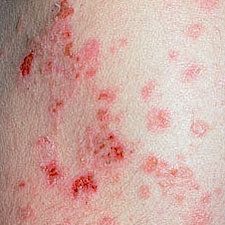Article
Antirituximab Antibodies Detected in Patients with Pemphigus
Author(s):
Despite the frequency in which the ARAs were detected, investigators noted that they were not associated with any noticeable patient outcomes.

Antirituximab antibodies (ARAs) were detected in the serum of patients who were treated with rituximab (RTX) for moderate to severe pemphigus, according to data from new cohort study.
Despite the frequency in which the ARAs were detected, investigators noted that they were not associated with any noticeable patient outcomes. However, a select number of patients who were affected by a combination of ARAs, low RTX concentration, incomplete B-cell depletion, and persistent serum anti-DSG3 appeared to be at high risk of relapse.
Though RTX had been approved as the first-line treatment for moderate to severe pemphigus vulgaris, instances of ARAs have been rarely studied in patients who do not achieve complete remission (CR) during treatment.
As such, an investigative team led by Alexandre Lemieux, MD, of Normandie University in Rouen, France, evaluated the prevalence of ARAs in patients with pemphigus who were treated with RTX and he association between achievement of sustained CR and occurrence of relapse.
The team enrolled patients from the Ritux3 trial, which collected serum samples at months 12, 18, and 36. Those who were enrolled in the study were treated in accordance to the regimen established in the trial, which included 1000 mg of intravenous RTX on the first and fifteenth day followed by 2 maintenance infusions of 500 mg at months 12 and 18.
These infusions were combined with a short course of prednisone which was tapered over 3-6 months, and the team followed patients for up to 36 months.
A total of 42 patients from the RTX arm of the Ritux3 trial were included in the present study, which also featured 5 additional patients from an ancillary study to broaden the groups of patients who had relapsed. The mean age of patients included in the study was 55 years and 56 years for patients with and without ARAs, respectively, and 59.5% of all patients were women.
During the first year of the study, investigators detected ARAs in 13 (31%) patients, and 9 patients who experienced relapse before month 12 were excluded due to additional infusions.
Of the 33 patients who remained in the study, 2 (6.1%) experienced relapse prior to month 12, and 31 (95.9%) maintained a sustained CR until 36 months. No differences were observed in the rate of CR between patients who had ARAs (85%) and those who did not (P=.15), and both groups were reported to have similar CD19+ B-cell depletion and RTX levels, though patients with ARAs had higher DSG3 Ab levels compared with those without (P=.03).
“Few patients with the combination of ARAs, an undetectable RTX serum level, an incomplete B-cell depletion, and a persistence of high levels of anti-DSG3 Abs seem at high risk of relapse,” the authors wrote.”However, because the number of patients included was relatively small, prospective studies encompassing more patients are needed to properly address this question.”
The study, "Evaluation of Clinical Relevance and Biological Effects of Antirituximab Antibodies in Patients With Pemphigus," was published online in JAMA Dermatology.





